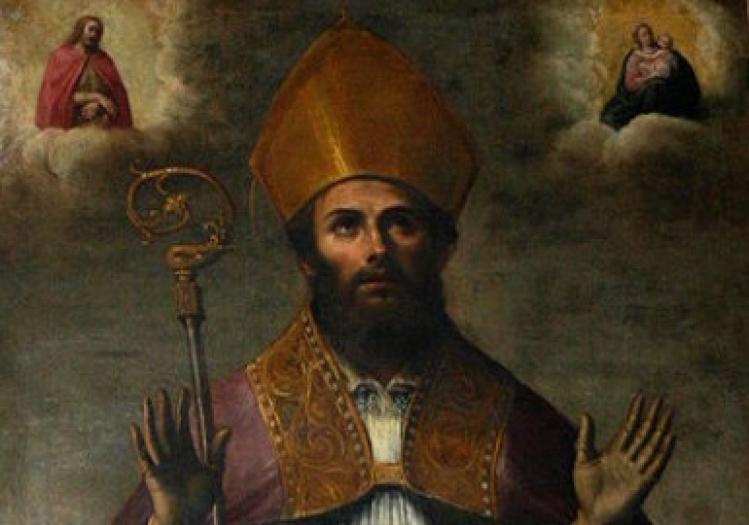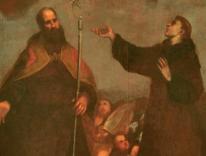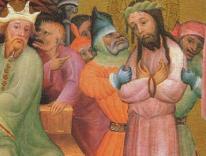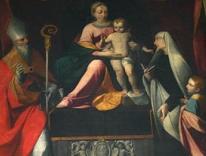
True sacrifice is every deed done to lead us to unity with God in a holy community, to that ultimate good by which we can be truly happy.... A person consecrated by God’s name and devoted to God is himself a sacrifice if he dies to the world to live for God. This, too, is part of the mercy that a person extends to himself, which is why it is written, “Have mercy on your soul by pleasing God” (Sir 30:24). And our body is also a sacrifice when we discipline it by temperance, if we do this, as we should, for God’s sake, so that we do not present our members as instruments of wickedness to sin, but as arms of righteousness to God (Rom 6:13). That is what the Apostle exhorts us to: “I beg you, brothers and sisters, by the mercy of God, to present your bodies as a living sacrifice, holy, pleasing to God, your reasonable worship.
If, then, the body, which the soul uses as if a lowly servant or tool, is a sacrifice when a good and right use of it is referred to God, how much more does the soul become a sacrifice when it refers itself to God so that it may be set on fire by love of God, may lose the form of worldly desire, and take on a new form by submission to the unchangeable form, thus pleasing God because of what it has received from God. That is why the Apostle then added: “And do not become con-formed to this world, but be re-formed in the newness of your mind that you may prove what is the will of God and what is the good and the acceptable and the perfect” (Rom 12:1, 2).
True sacrifices, then, are works of mercy either towards ourselves or towards our neighbors, done for God’s sake. Now the works of mercy are done so that we may be freed from misery and so that we may be happy, and this does not happen except by the good of which it is said, “My good is to cling to God” (Ps 72[73]:28). It immediately follows that the entire redeemed city itself, that is, the assembly and fellowship of the holy, is offered to God as a universal sacrifice by the great priest who in his suffering offered himself for us so that we might be the body of so great a head. He did this while in the form of a slave, and it was this form that he offered, in this form that he was offered, because it is according to this form that he is the mediator, that he is the priest, that he is the sacrifice.
The Apostle exhorted us to “present our bodies a living sacrifice, holy, pleasing to God, our reasonable worship, and that we not be conformed to this world but be reformed in the newness of our mind, to prove what is the will of God, what is the good and the acceptable and the perfect,” and this entire sacrifice we ourselves are. “For I say,” he goes on, “by the grace of God that has been given to me, to all among you not to be more wise than we ought to be wise, but to be wise unto temperance, according as God has apportioned to each one the measure of faith. For as in one body we have many members, and all the members do not have the same role, so we the many are one body in Christ, but individually we are members of one another, having different gifts according to the grace of God that has been given to us” (Rom 12:3-16). This is the sacrifice of Christians: we the many are one body in Christ. This is the sacrifice that the Church also celebrates in the sacrament of the altar, well known to the faithful, where she is shown that in what she offers she herself is offered. (De civ. Dei, X, 6; PL 41, 283-284)
In the final sentence “the sacrament of the altar, well known to the faithful” refers to what is known as the disciplina arcani, the practice of the church of withholding the full mystery until a person was baptized. The “faithful” (fideles) in Augustine’s writings are the baptized. Sermons of his survive that follow the steps by which catechumens were gradually instructed about prayers (the Our Father), commandments (the Decalogue), and creeds (the so-called Apostles’ Creed) as they approached baptism at the Easter Vigil. Before Vatican II’s liturgical reforms the two parts of the Mass were known as “the Mass of the Catechumens (from the Introit through the Creed), after which catechumens were once expected to leave, and as “the Mass of the Faithful,” that is, “of the baptized.” (These titles, of course, have been replaced by “The Liturgy of the Word” and “The Liturgy of the Eucharist.”)
The last sentence also reflects the understanding of the relationship between the eucharist and the church that prevailed until well into the Middle Ages. Three forms of “the Body of Christ” (corpus triforme) were distinguished in the New Testament: the physical body born of the Virgin, crucified, and raised to the Father’s right hand; the mystical body, that is, the body present in mysterio under the forms of bread and wine, and the real body, the church, that comes to be when all the believers receive the same Bread, they become what they receive, that is, the Body of Christ. “Real” here refers to the final realization, the final moment in a dynamic movement whereby the body of the Risen Lord becomes present in mystery and effects the ecclesial body of Christ that is the church.
Later, challenges to the faith forced a shift in focus from the relationship between the second and third moments in this movement to the relationship between the first two moments. Then the two adjectives shifted their places: “real” began to characterize the presence of Christ in the bread and wine, while “mystical” began to be referred to the church, still meaning, however, the church as enacted in the eucharistic mystery. Eucharistic theology began largely to lose its ecclesial dimension, and ecclesiology its eucharistic dimension.
This sense of the eucharistic dynamic is clearly present in Augustine (as also, still, eight centuries later, in Aquinas), and nothing could more betray their thought than the idea that one had to choose between the second and the third moments in the vital movement.
Please email comments to [email protected] and join the conversation on our Facebook page.
Share
Previous Story
Pope Francis accepts Cardinal Keith O'Brien's resignation.
Next Story
Dante's Ontology


